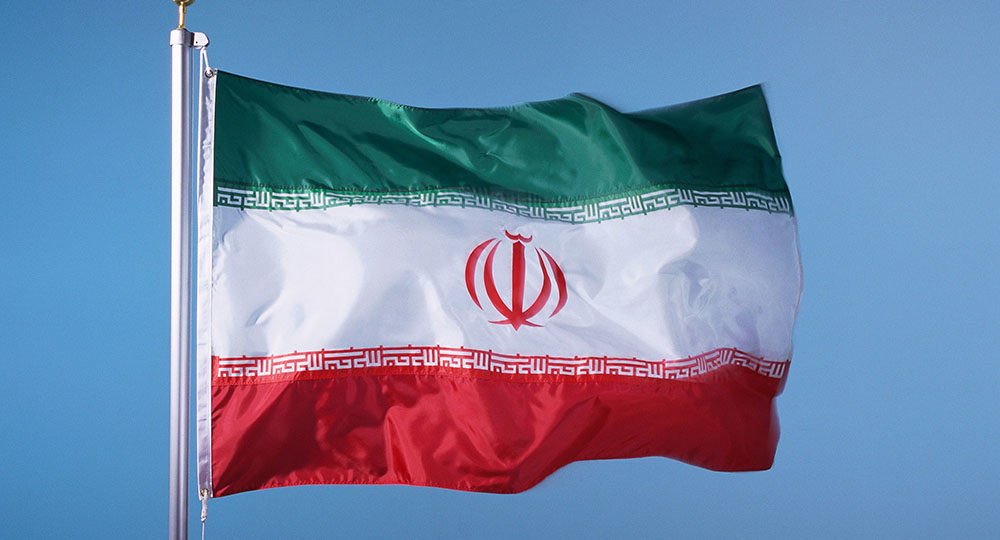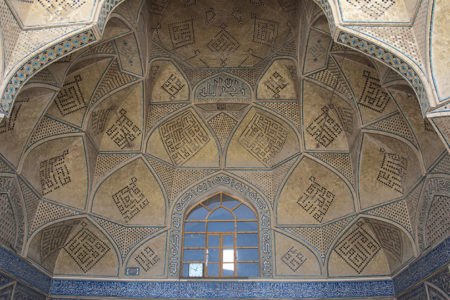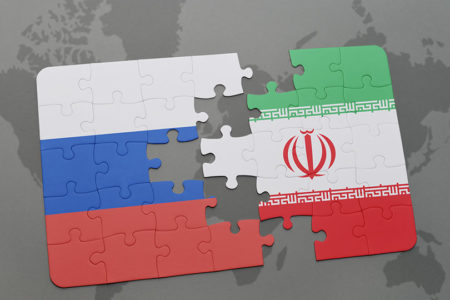Ahmadinejad’s Messianic Policy
Immediately upon assuming the presidency of Iran, Mahmoud Ahmadinejad began to assert his belief in the imminent return of the Mahdi as the basis for his political activities. Despite the traditional belief that no one can foresee the hour of the Mahdi’s return, Ahmadinejad frequently stated that his coming was nigh, and even gave a more specific prediction. During a meeting with the foreign minister of an Islamic country, he said that the crisis in Iran “presaged the coming of the Hidden Imam, who would appear within the next two years.”1 In a December 2006 speech in Kermanshah, Ahmadinejad wished the Christians a merry Christmas and said, “I hereby announce that, with God’s help, the day is not far off when Jesus will return at the side of the Hidden Imam.”2
Not only has Ahmadinejad wished to proclaim the imminent coming of the Mahdi and thereby to legitimize his policy and actions by associating them with Hidden Imam, but he has also presented himself as being directly connected to God. In a speech about Iran’s nuclear program, he claimed to have “a connection with God” and exhorted the Iranians to be true believers so that God would support them in their just struggle for nuclear technology:
“Believe [me], legally speaking, and in the eyes of public opinion, we have absolutely succeeded. I say this out of knowledge. Someone asked me, ‘So and so said that you have a connection.’ I said, ‘Yes, I have.’ He asked me, ‘Really, you have a connection? With whom?’ I answered, ‘I have a connection with God,’ since God said that the infidels will have no way to harm the believers. Well,[but] only if we are believers, because God said, You [will be] the victors. But the same friends say that Ahmadinejad says strange things.
“If we are [really] believers, God will show us victory, and this miracle. Is it necessary today for a she-camel to emerge from the heart of the mountain3 so that my friends will accept the miracle? Wasn’t the [Islamic] Revolution [enough of] a miracle? Wasn’t the Imam [Ayatollah Khomeini] a miracle?”4
Ahmadinejad has also presented himself as being privy to God’s intentions and actions, as reflected in his statement that “God has appointed the Hidden Imam to be our supporter.”5 His claim of having a direct relationship with God was also evident in the speech he made upon his return to Iran after addressing the U.N. General Assembly in 2005. Ahmadinejad claimed that, as he was delivering his U.N. address, he felt himself “surrounded by a halo of light” symbolizing the messianic nature of his message to the nations of the world.6
Ahmadinejad’s speeches have been characterized by the use of messianic terms and by emphasis on the need to prepare the ground for the Mahdi’s return.7 For example, in a May 2007 speech in Kerman province, he said, “We have a mission—to turn Iran into the country of the Hidden Imam.”8
As part of their commitment to these preparations, and at the suggestion of senior Ahmadinejad aide Parviz Daoudi, the Iranian ministers signed a pledge of allegiance to the Hidden Imam during the government’s first session, along with the pledge of allegiance to Ahmadinejad.9
In accordance with his messianic policy, Ahmadinejad has also endorsed an Iranian-Shi’ite folk tradition which maintains that the Hidden Imam attaches special importance to the Jamkaran Mosque in Qom—a tradition that has not been supported by the conservative religious establishment.10 As part of this policy, Iranian Minister of Culture and Islamic Guidance Mohammad Hossein Saffar Harandi was ordered to drop the ministers’ pledge of allegiance into a well in the courtyard of the Jamkaran Mosque, where believers drop prayers and personal requests. Ahmadinejad also allocated $10 million for renovating the mosque and its surroundings in preparation for the return of the Mahdi, and in 2005, he spent some $8 million on refreshments for pilgrims during the celebration of the Mahdi’s birthday.11 The regime’s encouragement of Mahdism is also evident in content on the Web site of Iran’s government broadcasting service. For example, the site presents information on the Iranian TV series “The World Toward Illumination,” which deals with the imminent arrival of the Mahdi.12
It should be noted that political manifestations of Ahmadinejad’s messianic beliefs were evident even prior to his election to the presidency. According to reports, during his term as mayor of Tehran (2003–2005), the municipality printed a city map that showed, among other things, the route that will be taken by the Mahdi upon his return.13
At the International Seminar on the Doctrine of Mahdism, held in Iran September 6–7, 2006, during the celebrations for the Mahdi’s birth-day and attended by representatives of various countries, Ahmadinejad emphasized the universal and active nature of Mahdism and called on the West to accept it: “Today mankind is proceeding towards the truth. Today the happiness of mankind depends on proceeding towards the truth. Today we invite everyone to proceed towards the truth, since [the truth] is the only way….This celebration [of the Mahdi’s birthday] is not only for Muslims but for the entire world. The Mahdi belongs to all of mankind….
“The Hidden Imam has no tangible presence among us, but he is always [here], and we must prepare the ground for his speedy appearance….Some claim that during his occultation, his [nobility] is suspended, but that is not true….On the contrary, we must rush toward him and hasten to prepare the ground for his appearance. [He will not appear] if we sit idly. Mankind must hurry toward the Hidden Imam in order to reach him. A person who [actively hastens the coming of the Imam] is different from one who does not….Today, mankind is proceeding rapidly toward perfection, truth, justice, love, peace and compassion, and this is possible only under the rule of the perfect man [i.e. the Hidden Imam].”14
ENDNOTES
- Aftab (Iran), November 16, 2005, quoted in Rooz (Iran), December 12, 2005.
- Emrooz (Iran), December 20, 2006.
- This refers to a Koranic verse (7:73).
- Iran News (Iran), October 15, 2006. For more information on Ahmadinejad’s claims regarding his connection with God, see MEMRI Special Dispatch No. 1328, “Iran President Ahmadinejad: ‘I Have a Connection With God, Since God Said That the Infidels Will Have No Way to Harm the Believers’; ‘We Have [Only] One Step Remaining Before We Attain the Summit of Nuclear Technology’; The West ‘Will Not Dare to Attack Us,’” October 19, 2006 <http://memri.org/bin/articles.cgi?Page=archives&Area=sd&ID=SP132806>.
- Fars (Iran), April 1, 2007.
- Rooz (Iran), October 1, 2006.
- For examples, see Kayhan, September 29, 2005; Fars news agency, October 11, 2005; Sharq, November 12, 2005; ISNA news agency, November 16, 2005; IRNA news agency, April 16, 2006; Kayhan, November 23, 2006; Emrooz, December 20, 2006; Jomhouri-ye Eslami, December 24, 2006.
- Aftab (Iran), May 10, 2007.
- ILNA (Iran), October 17, 2005.
- Shi’ite scholars are divided regarding the status of this mosque. The daily Jomhouri-ye Eslami, which is affiliated with the religious seminaries in Qom and which represents the views of important Ayatollahs from the seminaries, stated that the mosque is no different than any other (September 13, 2006), while the weekly Parto-ye Sokhan, affiliated with Ayatollah Mohammad Taqi Mesbah-e Yazdi, cited the traditional belief that the mosque had been built at the order of the Hidden Imam and that it holds special importance for him (September 20, 2006).
- The Shi’ites celebrate the birthday of the Hidden Imam on the 15th day of the Muslim month of Sha’ban, which in 2006 coincided with September.
- See MEMRI Special Dispatch No. 1436, “Waiting for the Mahdi: Official Iranian Eschatology Outlined in Public Broadcasting Program in Iran,” January 25, 2007 <http://memri.org/bin/articles.cgi?Page=archives&Area=sd&ID=SP143607>.
- The reports stated that “the distribution of a distorted map …showing the route [that will be taken] by the Mahdi [upon his return] has been stopped [following critical] reactions from political and religious circles. The map was distributed by Tehran municipality …but the copies were soon recalled following
- [criticism] by senior officials in the regime.” (Hatef Web site—apparently the Website Hatef News, associated with supporters of Rafsanjani—December 5, 2005, quoted in Rooz, December 5, 2005).
- ISNA (Iran), September 6, 2006.
(© Copyright 2007 by The Middle East Media Research Institute [MEMRI]. All rights reserved. Used by permission.)






